Australian Tropical Rainforest Plants - Online edition
Garcinia zichii W.E.Cooper

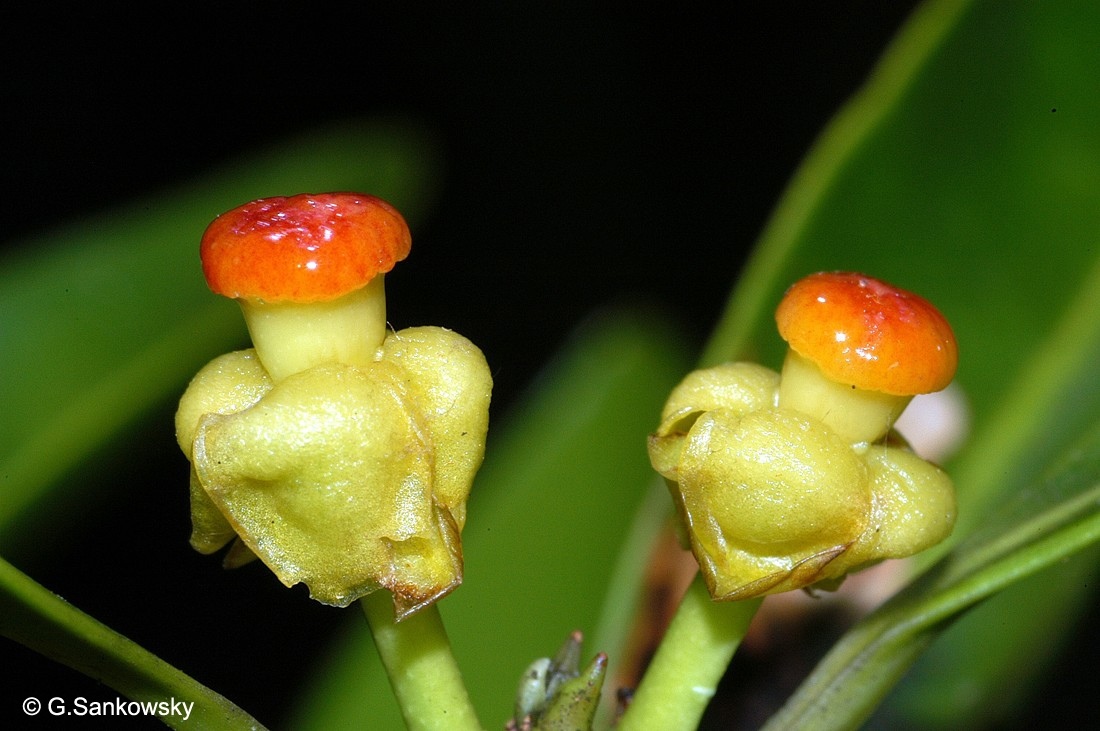

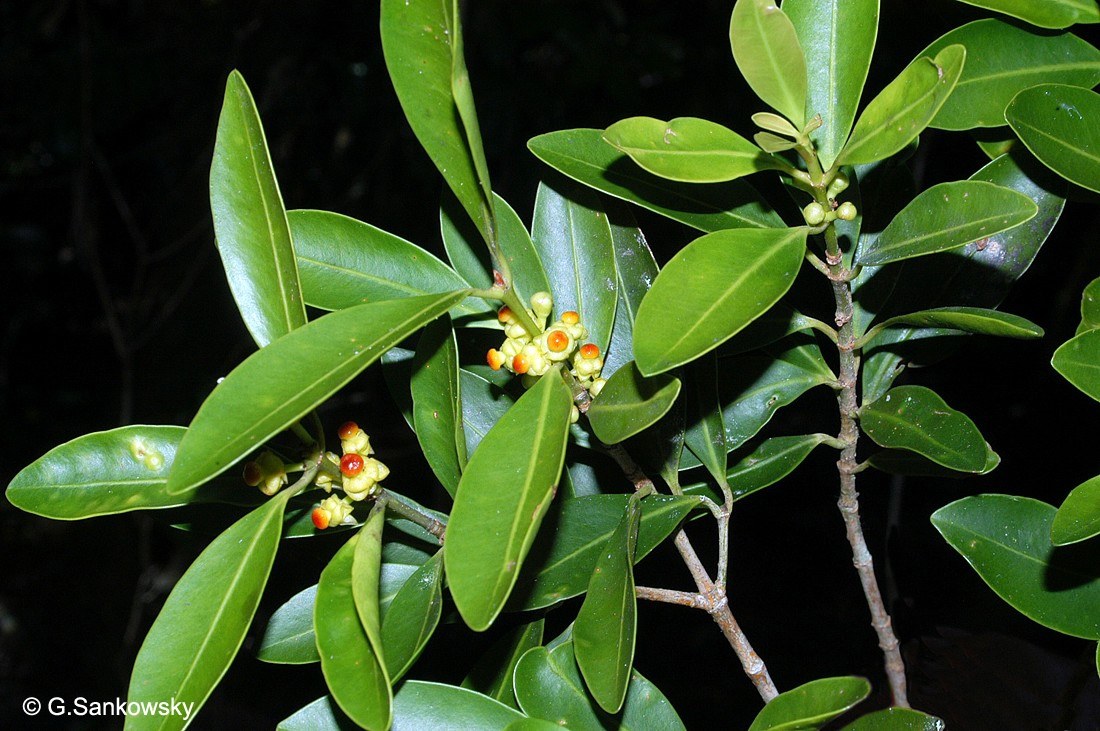
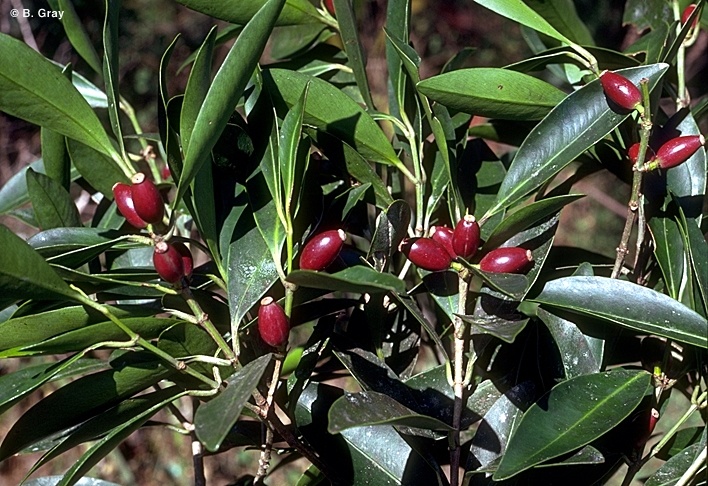

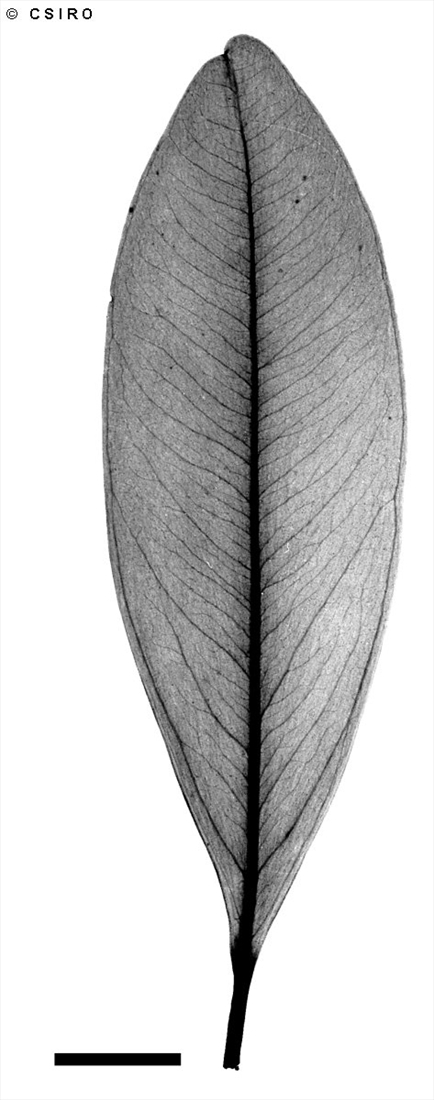
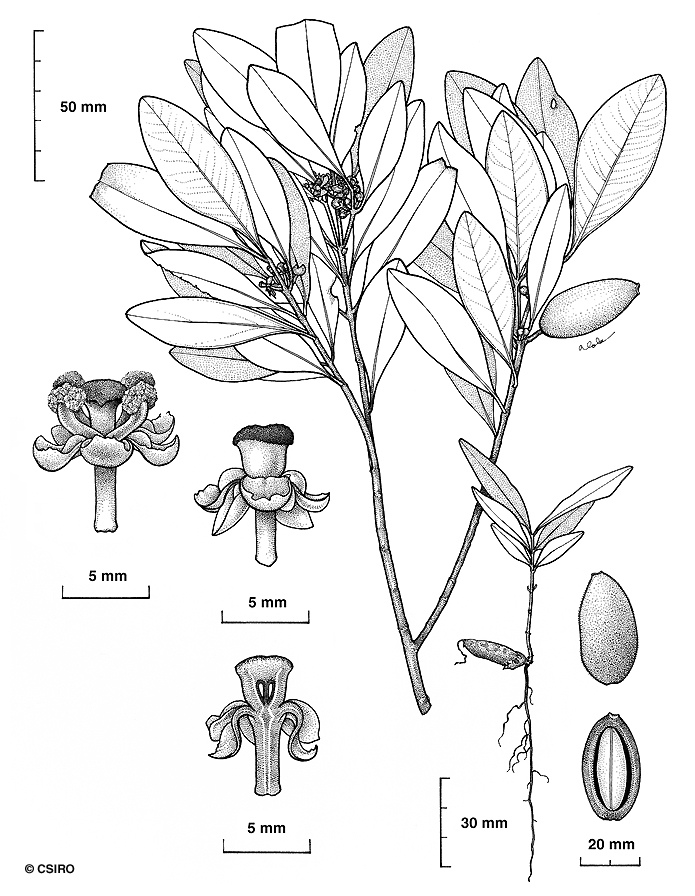
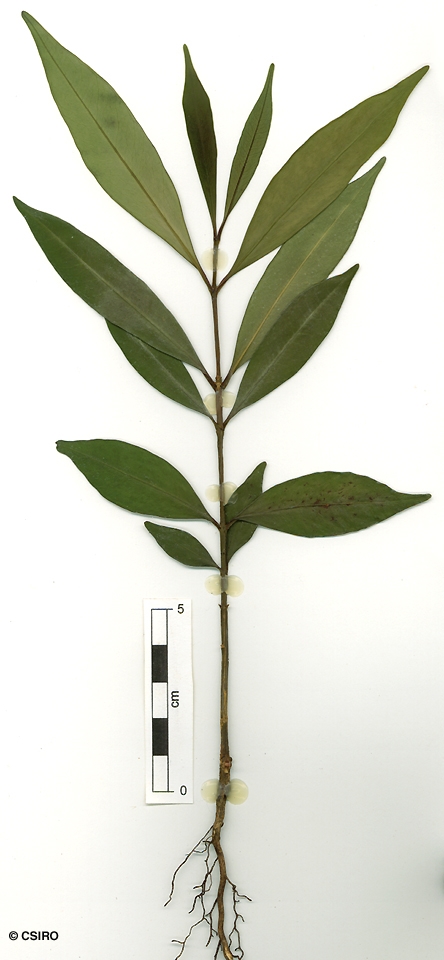
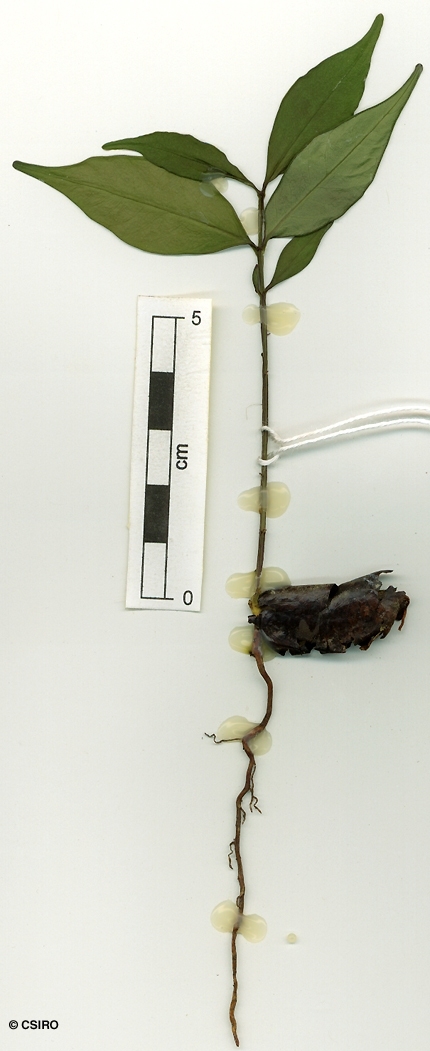
Cooper, W.E. (2013) Austrobaileya 9(1): 12. Type: Australia: Queensland. North Kennedy District: Tully Falls National Park, 2.2 km along Tully Falls Road from Charmillan Creek bridge, 8 November 2011, A. Ford 5908 & M. Torello-Raventos (holo: CNS [2 sheets + spirit]; iso: BRI, CANB, K, KL, L, MEL, MO, NSW, SING).
Baconwood; Marblewood
Exudate, if present, colourless to white or slightly milky. Petioles 5-10 mm long, channelled. Leaf blades 3.5-11 cm long x 1.5-3.5 cm wide; elliptical or rarely obovate; margin flat or recurved. Midrib raised on the upper surface of the leaf blade; secondary veins 12-18 pairs. Exudate-containing canals numerous and conspicuous on the underside as unbranches lines +/- parallel to each other and running at angles between primary vein and margin.
Male inflorescences axillary or rarely terminal, an umbel or rarely a cyme, 2-11-flowered (mostly 3-5-flowered). Male flowers: not fragrant, 7.5-8.5 mm diam., pedicels 3.5-5 mm long; sepals 4, outer pair joined, inner pair free, D-shaped, 2-4 mm long x 2-4 mm wide, yellow or green; petals 4, free, orbicular, becoming reflexed but remaining incurved at apex, 3-4.5 mm long x 3-4.5 mm wide, green; androecium 4-phalangiate; phalanges opposite petals, strap-shaped, erect becoming slightly reflexed, 1-4 mm long, 1-2 mm wide, apex undivided or divided into two short arms; anthers ca. 20 per phalange, enveloping phalange apex; pistillode fungiform, 2-2.5 mm long x 2-2.8 mm wide at apex, apex dark and orange-red or reddish-brown and quickly becoming viscous once flowers are open. Female inflorescences axillary, an umbel, 3-5-flowered. Female flowers: occasionally fragrant, 6-8 mm diam.; pedicels 2-5 mm long; sepals 4, D-shaped or deltoid, yellow or green, outer pair joined, inner pair free, 2-4 mm long x 2.5-4 mm wide; petals 4, free, becoming reflexed, orbicular, 2.2-4.2 mm long x 2.8-4.2 mm wide, yellow or green; gynoecium fungiform; ovary ellipsoid, 0.6-1.5 mm long x 4-7 mm wide, 2-locular; stigma disc-like, entire, 4-5 mm diam., yellow, orange or reddish, quickly becomes viscous once flowers are open.
Two pairs of cataphylls usually produced before the first pair of true leaves. First pair of true leaves elliptic, apex acute and sometimes retuse, base cuneate to attenuate. Leaf blades glabrous, midrib raised on the upper surface, margin somewhat recurved. Stipules small and inconspicuous. Ribs or pairs of wings run down the stem from the base of each petiole. Roots emerge from each end of the seed. At the tenth leaf stage: leaf blade narrowly elliptic-ovate, apex acuminate, base attenuate, glabrous, about 15-20 main lateral veins each side of the midrib; a fine network of +/- parallel latex canals usually visible on the underside of the leaf blade; stipule-like glands 0.8 mm long occur on the stem near the base of the petiole. Midrib raised on the upper surface of the leaf blade. Seed germination time 50 to 121 days.
Occurs in NEQ. Altitudinal range from 150-1300 m. Grows in well developed upland and mountain rain forest.
Garcinia sp. Davies Creek (J.G.Tracey 14745) [Provisional Phrase Name].





